 I spent some time early in the year searching through Etsy shops for new incense. I had the usual filters on, avoiding the usual things we don’t tend to review at ORS, the commercial level charcoals like Hem and Gonesh, many sticks dyed in color, most cones, and dipped incense. But it’s in the doing of this that sometimes you’re met with the conundrum that some of these styles occasionally break the rules in an interesting fashion. Epika Earth (Etsy shop) is one of those companies, an Akron, Ohio-based small business with an imprint that is quite original and unique, a company that seems to have invigorated a dipped, largely essential oil-based incense style. What I noticed first was that a lot of their visuals were arresting, second that their naming conventions were both familiar and a little different and third that occasionally in the catalog you’d turn up a completely different style of small batch incense such as dhoops. While I realized that many of their stick incenses must be dipped, it was the descriptions and ingredients that reeled me in, they were often mixes that sounded interesting and not just dialed in. So I made an order on Etsy for about seven items and then invited the company to send anything they’d like to see reviewed and they sent quite a few extra packages, most of which I was really glad they did as there were some really unique and wonderful blends in there that I might not have instinctively picked. Every incense was a new voyage, often I would have to reorient just to experience very new styles or combinations in incense that I have never tried before. So I’m going to break these down into roughly three different installments, mostly by what seem like the name of series, in the first installment’s case the Rare Terra series.
I spent some time early in the year searching through Etsy shops for new incense. I had the usual filters on, avoiding the usual things we don’t tend to review at ORS, the commercial level charcoals like Hem and Gonesh, many sticks dyed in color, most cones, and dipped incense. But it’s in the doing of this that sometimes you’re met with the conundrum that some of these styles occasionally break the rules in an interesting fashion. Epika Earth (Etsy shop) is one of those companies, an Akron, Ohio-based small business with an imprint that is quite original and unique, a company that seems to have invigorated a dipped, largely essential oil-based incense style. What I noticed first was that a lot of their visuals were arresting, second that their naming conventions were both familiar and a little different and third that occasionally in the catalog you’d turn up a completely different style of small batch incense such as dhoops. While I realized that many of their stick incenses must be dipped, it was the descriptions and ingredients that reeled me in, they were often mixes that sounded interesting and not just dialed in. So I made an order on Etsy for about seven items and then invited the company to send anything they’d like to see reviewed and they sent quite a few extra packages, most of which I was really glad they did as there were some really unique and wonderful blends in there that I might not have instinctively picked. Every incense was a new voyage, often I would have to reorient just to experience very new styles or combinations in incense that I have never tried before. So I’m going to break these down into roughly three different installments, mostly by what seem like the name of series, in the first installment’s case the Rare Terra series.
 So the first two in this list were samples from the company. And the first of these, Bacchus, is actually a good indication of the direction some of the Epika Earth incenses go in. The essential oil mixes of these scents are not at all obvious and often smell like aged wines or other libations. The listed materials include styrax resinoid, labdanum resinoid, dragon’s blood, golden copal, and agarwood. So it’s probably not a surprise that this is an aroma roughly in the vicinity of some of Mermade’s heat-ables except in stick form, especially those with summer to fall themes. The mix is described as “Fruit Orchards at midnight in the fall with fresh fallen leaves and musk in the winds. Musky and sweet.” It feels like a vintage wine, a heady mix that really goes in a mythological, dreamy direction. This appears to largely be from the mix of laudanum, styrax and copal, all of which give it something of a liquid feel and, perhaps, a touch of alcohol. But on top the agarwood (dusting? oil?) provides something of a contrast to the Dionysian wine and a bit of balancing dryness. Any incense like this often comes with subnotes that are like the harvest or grapes or even raisins, all of which also overlap kyphi sorts of subscents. So it is indeed a heady and appropriately named brew and a fascinating, and a quality one at that. My only slight caveat is that many of the stick incenses appear to use a similar base, they have a similar aroma and often when you first light them you will only get this for 20-30 seconds before the actual aroma kicks in in force.
So the first two in this list were samples from the company. And the first of these, Bacchus, is actually a good indication of the direction some of the Epika Earth incenses go in. The essential oil mixes of these scents are not at all obvious and often smell like aged wines or other libations. The listed materials include styrax resinoid, labdanum resinoid, dragon’s blood, golden copal, and agarwood. So it’s probably not a surprise that this is an aroma roughly in the vicinity of some of Mermade’s heat-ables except in stick form, especially those with summer to fall themes. The mix is described as “Fruit Orchards at midnight in the fall with fresh fallen leaves and musk in the winds. Musky and sweet.” It feels like a vintage wine, a heady mix that really goes in a mythological, dreamy direction. This appears to largely be from the mix of laudanum, styrax and copal, all of which give it something of a liquid feel and, perhaps, a touch of alcohol. But on top the agarwood (dusting? oil?) provides something of a contrast to the Dionysian wine and a bit of balancing dryness. Any incense like this often comes with subnotes that are like the harvest or grapes or even raisins, all of which also overlap kyphi sorts of subscents. So it is indeed a heady and appropriately named brew and a fascinating, and a quality one at that. My only slight caveat is that many of the stick incenses appear to use a similar base, they have a similar aroma and often when you first light them you will only get this for 20-30 seconds before the actual aroma kicks in in force.
 Really surprising was the Blue Ice Pine because in an American incense you expect this to be something heavy in piñon pine, like, say, Fred Soll’s incenses, but this one has a remarkably Japanese-like profile. It’s not a deep, resinous incense so much as it has a gentle and refined top end that has an almost langorous resolution to it. It actually reminds me more of like some more nebulous conifer incense than pine itself (both Nippon Kodo Mori-no-koh Conifer and Shoyeido Xiang-Do Forest come to mind for different reasons), but this might also be because there’s a secondary layer of spice that is even more subtle than the resins. This sort of mellow scent in the mix is probably why there are some tea comparisons as it’s similar to a spiced herbal tea in a way. It’s a really beautifully designed incense. I’m so used to dipped incenses often being loud and glaring that to try one with this sort of subtlety really changed my opinion on the possibilities here, and I can’t think of higher praise than that. And in the morning, it’s almost a perfect burn. The final three items were those I chose to order…
Really surprising was the Blue Ice Pine because in an American incense you expect this to be something heavy in piñon pine, like, say, Fred Soll’s incenses, but this one has a remarkably Japanese-like profile. It’s not a deep, resinous incense so much as it has a gentle and refined top end that has an almost langorous resolution to it. It actually reminds me more of like some more nebulous conifer incense than pine itself (both Nippon Kodo Mori-no-koh Conifer and Shoyeido Xiang-Do Forest come to mind for different reasons), but this might also be because there’s a secondary layer of spice that is even more subtle than the resins. This sort of mellow scent in the mix is probably why there are some tea comparisons as it’s similar to a spiced herbal tea in a way. It’s a really beautifully designed incense. I’m so used to dipped incenses often being loud and glaring that to try one with this sort of subtlety really changed my opinion on the possibilities here, and I can’t think of higher praise than that. And in the morning, it’s almost a perfect burn. The final three items were those I chose to order…
 Cocoa Pods is also very impressive, in fact more so with every stick. On my first stick I didn’t automatically get chocolate, and I thought the creator was going for something a lot more distinctive, perhaps. However, on my second stick I moved it to my upstairs burning station where it really opened up including a rather refined and original chocolate subnote. Chocolate isn’t always accurate in incense, it’s usually approximated by other ingredients and can often feel a bit synthetic or off. Third stick, you really start to notice what a beautiful job is being done here. If your expectations for chocolate have been set low from other incenses, you probably would just be happy to get the aroma alone, but this is even better than that. If Bacchus was a wine, and Blue Ice Pine a tea, then Cocoa Pods is obviously a very decadent cup of hot chocolate if a bit of some expensive spirit was added. This is described as a lighter version of their Ridiculously Sinful incense, which I have not tried but now absolutely want to. However they have put this together it really feels high quality and unique and it was hard not to keep waving the entire stick over to experience ever millimeter of it. It’s an absolute must for a shopping trip.
Cocoa Pods is also very impressive, in fact more so with every stick. On my first stick I didn’t automatically get chocolate, and I thought the creator was going for something a lot more distinctive, perhaps. However, on my second stick I moved it to my upstairs burning station where it really opened up including a rather refined and original chocolate subnote. Chocolate isn’t always accurate in incense, it’s usually approximated by other ingredients and can often feel a bit synthetic or off. Third stick, you really start to notice what a beautiful job is being done here. If your expectations for chocolate have been set low from other incenses, you probably would just be happy to get the aroma alone, but this is even better than that. If Bacchus was a wine, and Blue Ice Pine a tea, then Cocoa Pods is obviously a very decadent cup of hot chocolate if a bit of some expensive spirit was added. This is described as a lighter version of their Ridiculously Sinful incense, which I have not tried but now absolutely want to. However they have put this together it really feels high quality and unique and it was hard not to keep waving the entire stick over to experience ever millimeter of it. It’s an absolute must for a shopping trip.
 Inspirecense was a bit of a challenge at first. It’s a dhoop incense and it sets a record in that it’s the first incense that has set off my smoke detector in at least ten years (two beeps though and that was it). So it’s obviously self-lighting and pours out enough smoke that I was thinking it might be better used outside. However, I could tell there was something really yummy going on with it, but it was also overwhelming to burn. But after putting out the dhoop and saving half of it, I put that second half on a Shoyeido heater on a low enough heat not to ignite and oh yeah that was right adjustment for sure, it turned from overwhelming to extraordinary. It’s got a pretty lengthy ingredient list: sandalwood, shatavari root, quassia wood, golden copal, benzoin, organic blueberries, atlas cedar, and organic lavender and lives up to the complexity that it implies. I’m not even sure how to describe it because the orchestra of ingredients plays quite an amazing symphony with different “instruments” playing at different moments in the mix. At first I was thinking confectionary, like a chocolate cake or wait maybe that’s more like a chocolate meets a fruity sort of mix. Then the fruity note really grabs your attention until you realize it’s a perfect blueberry note, utterly splendid in the mix (seriously, just jaw-droppingly yummy). Later it feels more like the sandalwood and other woods come out as the dhoop heats a little more. I’m not sure this incense was intended to be heated given it can be lit, but it is a magnificent bit of art heated and the dhoop also goes much longer, I’d imagine you could get at least six could heats out of a piece that last hours (I also crumbled it as it got hotter). This was one of the two incenses that really caught my eye in the catalog, I’m generally drawn to the unique and deeply artisan and the description was more than I could overcome. Maybe I have a fifth sense about these things, but if anyone is interested I’d jump on this one immediately – make it the centerpiece of an order! Or maybe the second! It is inspiring indeed.
Inspirecense was a bit of a challenge at first. It’s a dhoop incense and it sets a record in that it’s the first incense that has set off my smoke detector in at least ten years (two beeps though and that was it). So it’s obviously self-lighting and pours out enough smoke that I was thinking it might be better used outside. However, I could tell there was something really yummy going on with it, but it was also overwhelming to burn. But after putting out the dhoop and saving half of it, I put that second half on a Shoyeido heater on a low enough heat not to ignite and oh yeah that was right adjustment for sure, it turned from overwhelming to extraordinary. It’s got a pretty lengthy ingredient list: sandalwood, shatavari root, quassia wood, golden copal, benzoin, organic blueberries, atlas cedar, and organic lavender and lives up to the complexity that it implies. I’m not even sure how to describe it because the orchestra of ingredients plays quite an amazing symphony with different “instruments” playing at different moments in the mix. At first I was thinking confectionary, like a chocolate cake or wait maybe that’s more like a chocolate meets a fruity sort of mix. Then the fruity note really grabs your attention until you realize it’s a perfect blueberry note, utterly splendid in the mix (seriously, just jaw-droppingly yummy). Later it feels more like the sandalwood and other woods come out as the dhoop heats a little more. I’m not sure this incense was intended to be heated given it can be lit, but it is a magnificent bit of art heated and the dhoop also goes much longer, I’d imagine you could get at least six could heats out of a piece that last hours (I also crumbled it as it got hotter). This was one of the two incenses that really caught my eye in the catalog, I’m generally drawn to the unique and deeply artisan and the description was more than I could overcome. Maybe I have a fifth sense about these things, but if anyone is interested I’d jump on this one immediately – make it the centerpiece of an order! Or maybe the second! It is inspiring indeed.
 Maui Coconut and Sandalwood is probably the one incense in this bunch similar to the dipped incenses I have tried in the past. Coconut is one of those scents that can be done pretty poorly, but fortunately Epika Earth have managed to make sure the scent isn’t too sweet or cloying. For a two-note incense it has an impressive list of ingredients: coconut, vanilla planifolia extract, santalum spicatum (sandalwood) oil, santalum austrocaledonicum (sandalwood) oil, cedrus deodora (himalayan cedarwood) oil, amyris balsamifera (amyris) oil, commiphora myrrha (myrrh) extract, myroxylon pereirae (balsam of Peru) oil, abies balsamea (fir balsam) extract, and caprylic/capric triglyceride (this also originates from coconut oil). The cedarwood oil is pretty noticeable in the sandalwood mix, but these types of oils seem like a fair mix in the modern age and while I wouldn’t expect Mysore level notes, it clearly does smell like reasonably sandalwood thankfully (both oils appear to be Australian sourced). So the question is really whether or not you’re going to enjoy the combination. For one thing the overall incense is surprisingly dry, it’s not the sort of coconut found in charcoals or even the sort of coconut creme pie scent of the Temple of Incense stick. The matching sandalwood is similarly dry, somewhat surprising given so much of the scents come from oils. Overall, it feels carefully crafted and put together, but as of the writing of this I haven’t quite decided if I enjoy the mix or not and that’s not all a criticism of the formula. Coconut is usually what I consider a “food incense” which tends to be more of a mood thing, but sandalwood sort of pushes that half way out if that makes sense. Definitely one of those your mileage may vary type of scent.
Maui Coconut and Sandalwood is probably the one incense in this bunch similar to the dipped incenses I have tried in the past. Coconut is one of those scents that can be done pretty poorly, but fortunately Epika Earth have managed to make sure the scent isn’t too sweet or cloying. For a two-note incense it has an impressive list of ingredients: coconut, vanilla planifolia extract, santalum spicatum (sandalwood) oil, santalum austrocaledonicum (sandalwood) oil, cedrus deodora (himalayan cedarwood) oil, amyris balsamifera (amyris) oil, commiphora myrrha (myrrh) extract, myroxylon pereirae (balsam of Peru) oil, abies balsamea (fir balsam) extract, and caprylic/capric triglyceride (this also originates from coconut oil). The cedarwood oil is pretty noticeable in the sandalwood mix, but these types of oils seem like a fair mix in the modern age and while I wouldn’t expect Mysore level notes, it clearly does smell like reasonably sandalwood thankfully (both oils appear to be Australian sourced). So the question is really whether or not you’re going to enjoy the combination. For one thing the overall incense is surprisingly dry, it’s not the sort of coconut found in charcoals or even the sort of coconut creme pie scent of the Temple of Incense stick. The matching sandalwood is similarly dry, somewhat surprising given so much of the scents come from oils. Overall, it feels carefully crafted and put together, but as of the writing of this I haven’t quite decided if I enjoy the mix or not and that’s not all a criticism of the formula. Coconut is usually what I consider a “food incense” which tends to be more of a mood thing, but sandalwood sort of pushes that half way out if that makes sense. Definitely one of those your mileage may vary type of scent.
Coming up in February, the next installment…

 The way a lot of these ingredients come together on this is quite beautiful, it almost feels like a spiral up from the base into some rarified top note. It’s fresh and clear all the way and the sandalwood content doesn’t feel as much as buried as it is more prominent than usual. The pine isn’t obvious at first (maybe because it’s something more like red pine than pinon), but it definitely weaves its scent through the sandalwood. Usually agarwood is named in these recipes and even though it isn’t named here, if it were to be found in small quantities, it wouldn’t surprise me in the least. There is also a scent I find hard to describe except for something like fresh walnut shells, it’s probably a bit adjacent to the pistachio shell note I talk about in the same category Incense Traditions puts this one in, Therapuetic and Relaxation Incense. And speaking of this, that’s supposedly where the Terminalia fruit falls as it’s supposedly the “King of Medicine” in Tibet and something far more obscure in the West, as I would have no idea what it smells like aromatically. I also want to borrow a bit from my Golog review as well, because this has this sort of brown, nutmeg softness that reminds me of milder brown ales. It’s all rather nicely done, very Western friendly, no harsh or pungent notes. Just a relaxing, mildly spicy and prominently woody incense of careful creation.
The way a lot of these ingredients come together on this is quite beautiful, it almost feels like a spiral up from the base into some rarified top note. It’s fresh and clear all the way and the sandalwood content doesn’t feel as much as buried as it is more prominent than usual. The pine isn’t obvious at first (maybe because it’s something more like red pine than pinon), but it definitely weaves its scent through the sandalwood. Usually agarwood is named in these recipes and even though it isn’t named here, if it were to be found in small quantities, it wouldn’t surprise me in the least. There is also a scent I find hard to describe except for something like fresh walnut shells, it’s probably a bit adjacent to the pistachio shell note I talk about in the same category Incense Traditions puts this one in, Therapuetic and Relaxation Incense. And speaking of this, that’s supposedly where the Terminalia fruit falls as it’s supposedly the “King of Medicine” in Tibet and something far more obscure in the West, as I would have no idea what it smells like aromatically. I also want to borrow a bit from my Golog review as well, because this has this sort of brown, nutmeg softness that reminds me of milder brown ales. It’s all rather nicely done, very Western friendly, no harsh or pungent notes. Just a relaxing, mildly spicy and prominently woody incense of careful creation. According to Incense Traditions,
According to Incense Traditions,  Like I-T, I do think this is a really mild incense, this isn’t the same kind of pine that’s going to be evocative of crushed needles or pinon resin, it’s probably somewhat analagous to what red sandalwood is like compared to the regular. This is true for both grades as I requested a sample of the 2 along with the 1 and if you compare them it does indeed seem like the wood shifts to a more leafy aroma on the former (ultimately though you really only need one or the other). Red Pine seems a bit closer to mesquite than the pinon does, I wouldn’t have imagined this to be a Himalayan tree if I hadn’t been told earlier. However it does have a pretty unique signature, there are some subnotes to this you would never think of in pine wood or resin, one or two which I even struggle to describe as they’re probably only inherent in this particular tree. It is indeed quite complex as mentioned in I-T’s description, even after a few sticks I found myself using it just trying to put in words in some way this sort of delicate tangy and spicy sweetness. One thing I found to help this aroma, is a bit of a cooler temperature, I found this really opened up the scent more. With more heat I get the mesquite-ish sense in the mix and less of the cooler sweetness and mild spiciness. I usually try to average around 3-4 sticks before I put down this review but I had easily surpassed this in listening time and it still didn’t feel quite finished, which speaks to the wood’s innate complexity.
Like I-T, I do think this is a really mild incense, this isn’t the same kind of pine that’s going to be evocative of crushed needles or pinon resin, it’s probably somewhat analagous to what red sandalwood is like compared to the regular. This is true for both grades as I requested a sample of the 2 along with the 1 and if you compare them it does indeed seem like the wood shifts to a more leafy aroma on the former (ultimately though you really only need one or the other). Red Pine seems a bit closer to mesquite than the pinon does, I wouldn’t have imagined this to be a Himalayan tree if I hadn’t been told earlier. However it does have a pretty unique signature, there are some subnotes to this you would never think of in pine wood or resin, one or two which I even struggle to describe as they’re probably only inherent in this particular tree. It is indeed quite complex as mentioned in I-T’s description, even after a few sticks I found myself using it just trying to put in words in some way this sort of delicate tangy and spicy sweetness. One thing I found to help this aroma, is a bit of a cooler temperature, I found this really opened up the scent more. With more heat I get the mesquite-ish sense in the mix and less of the cooler sweetness and mild spiciness. I usually try to average around 3-4 sticks before I put down this review but I had easily surpassed this in listening time and it still didn’t feel quite finished, which speaks to the wood’s innate complexity. 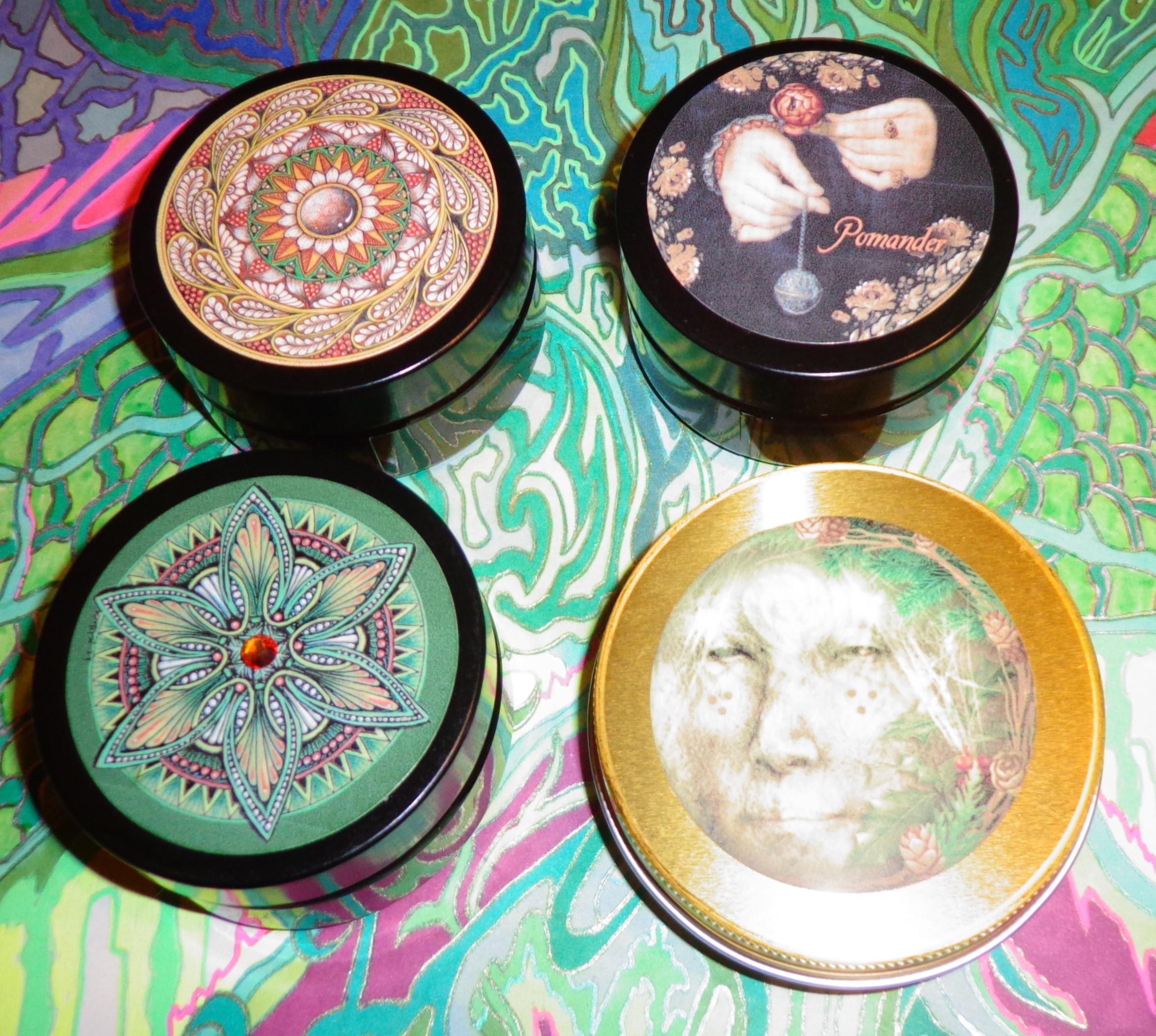
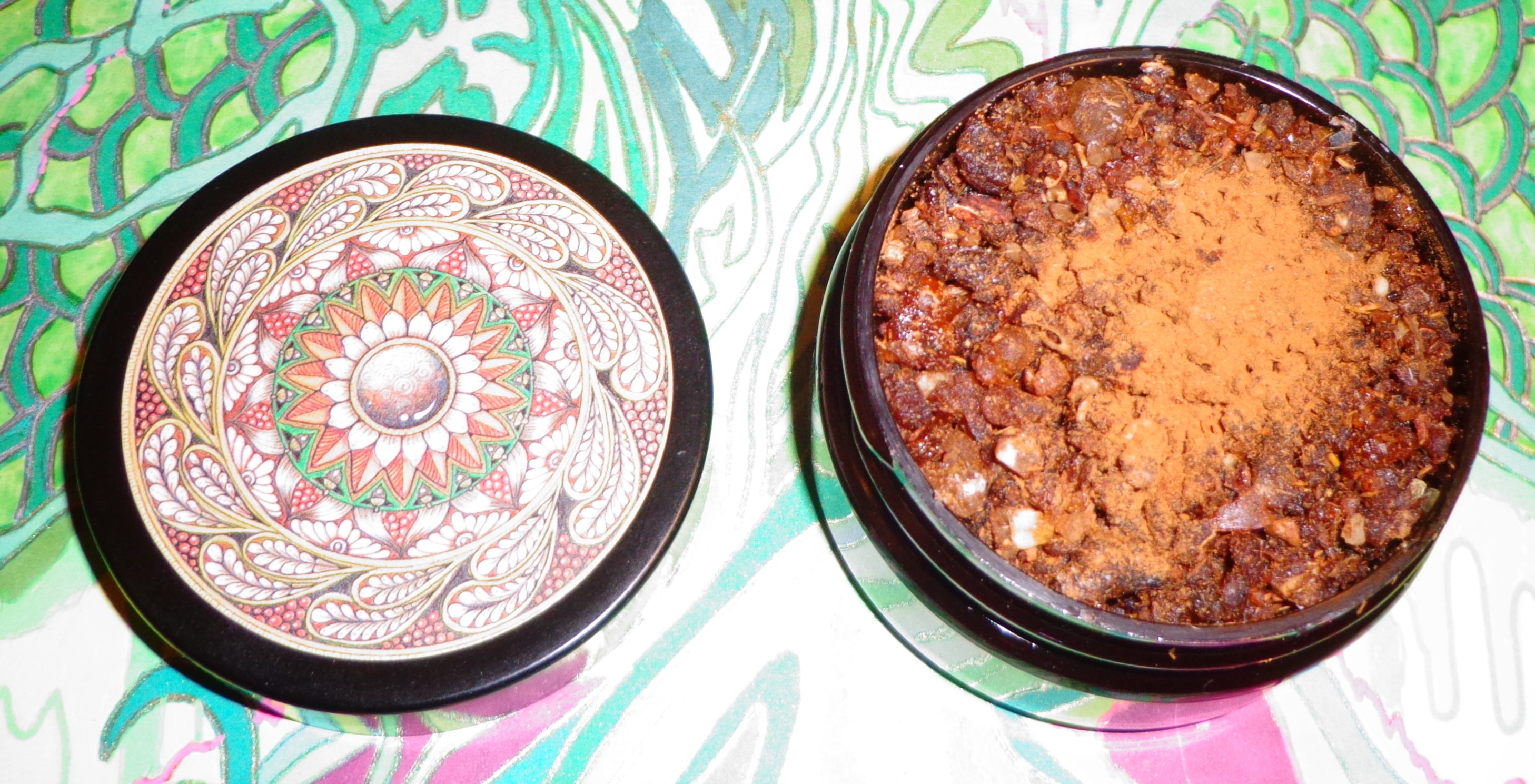 But before we get to the winter incenses, let’s pop back to the autumn for Mermade’s
But before we get to the winter incenses, let’s pop back to the autumn for Mermade’s 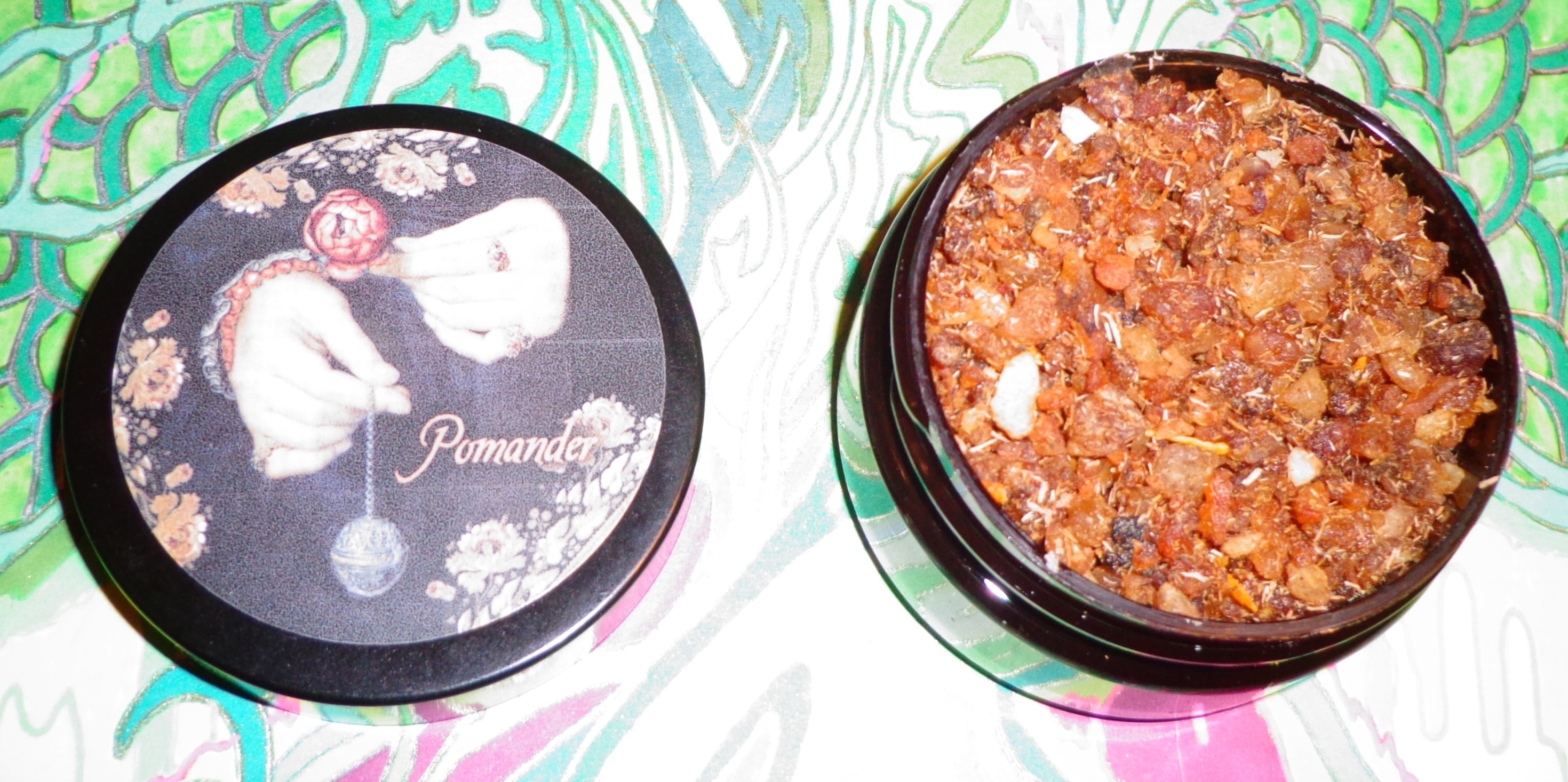 I have probably brought this up before (I seem to remember doing so recently with the Temple of Incense Festive Kiss which is certainly in the same spirit) but one of my early memories was a recipe my mom made called “spiced tea.” It was a very 70s sort of thing with Tang powder, Lipton tea and spices. It had loads of sugar and smelled amazing so of course I loved it. Mermade’s
I have probably brought this up before (I seem to remember doing so recently with the Temple of Incense Festive Kiss which is certainly in the same spirit) but one of my early memories was a recipe my mom made called “spiced tea.” It was a very 70s sort of thing with Tang powder, Lipton tea and spices. It had loads of sugar and smelled amazing so of course I loved it. Mermade’s 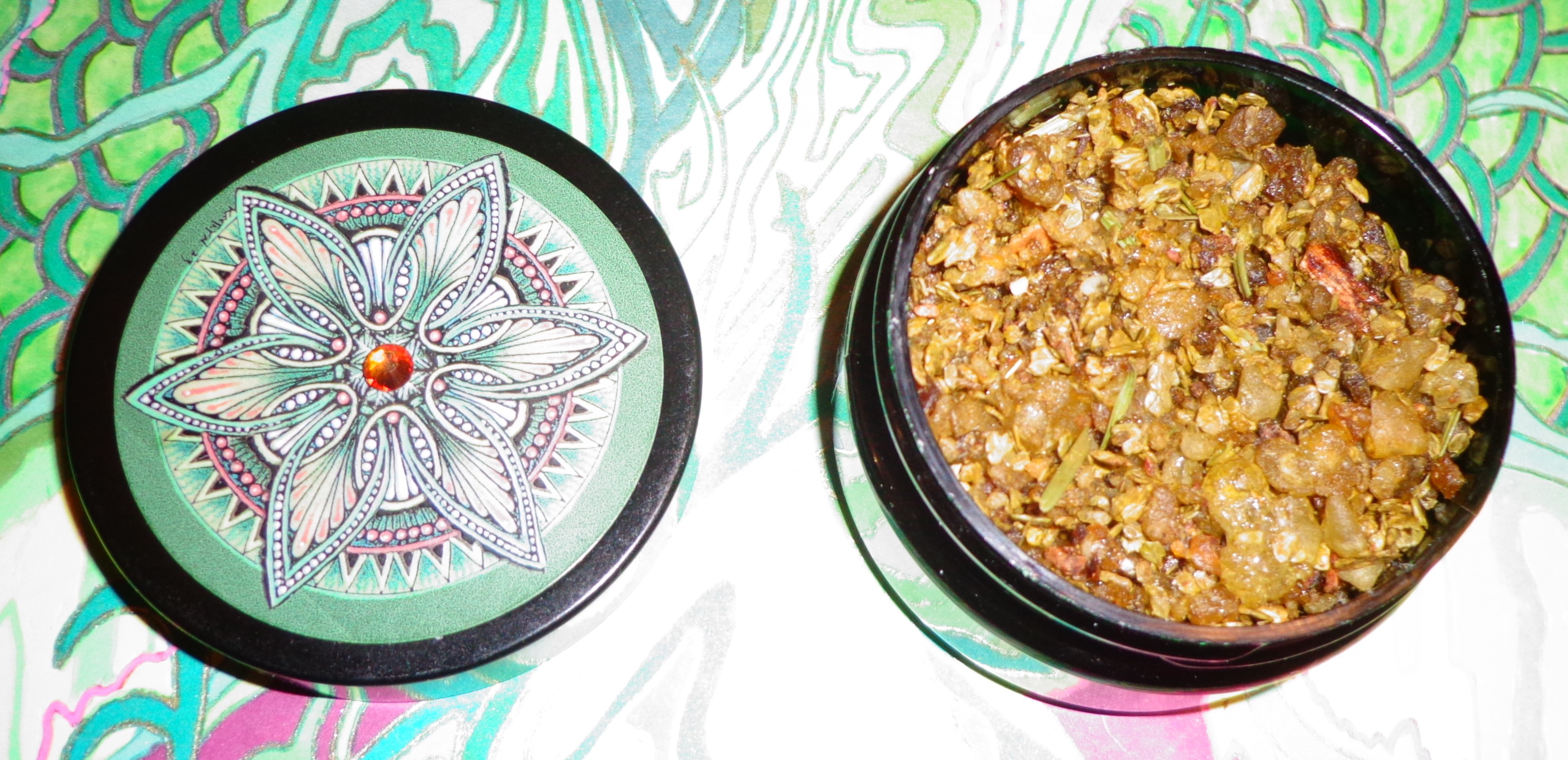
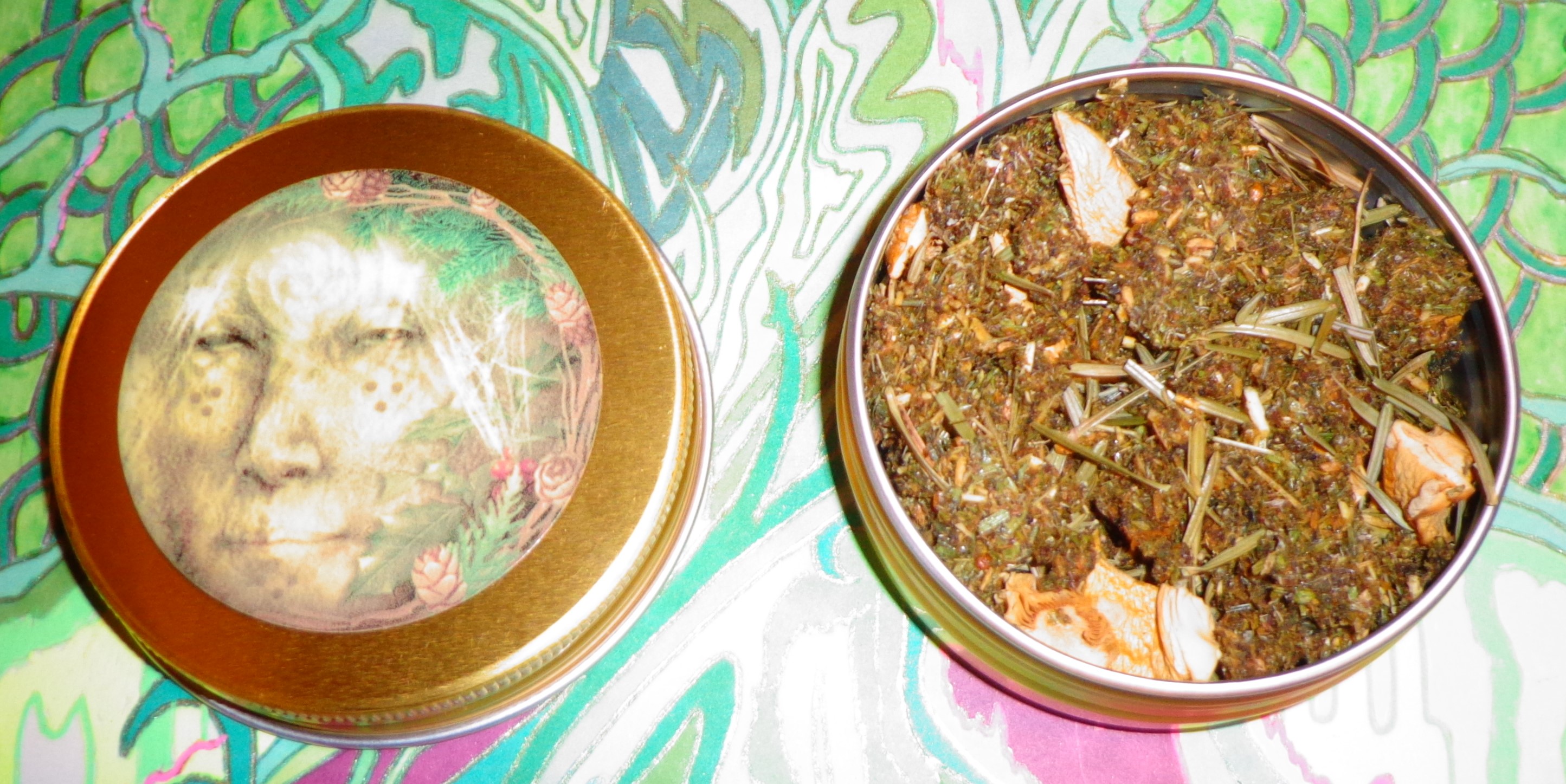 And not terribly far from Winter Wreath is the Espirit de la Nature offering
And not terribly far from Winter Wreath is the Espirit de la Nature offering 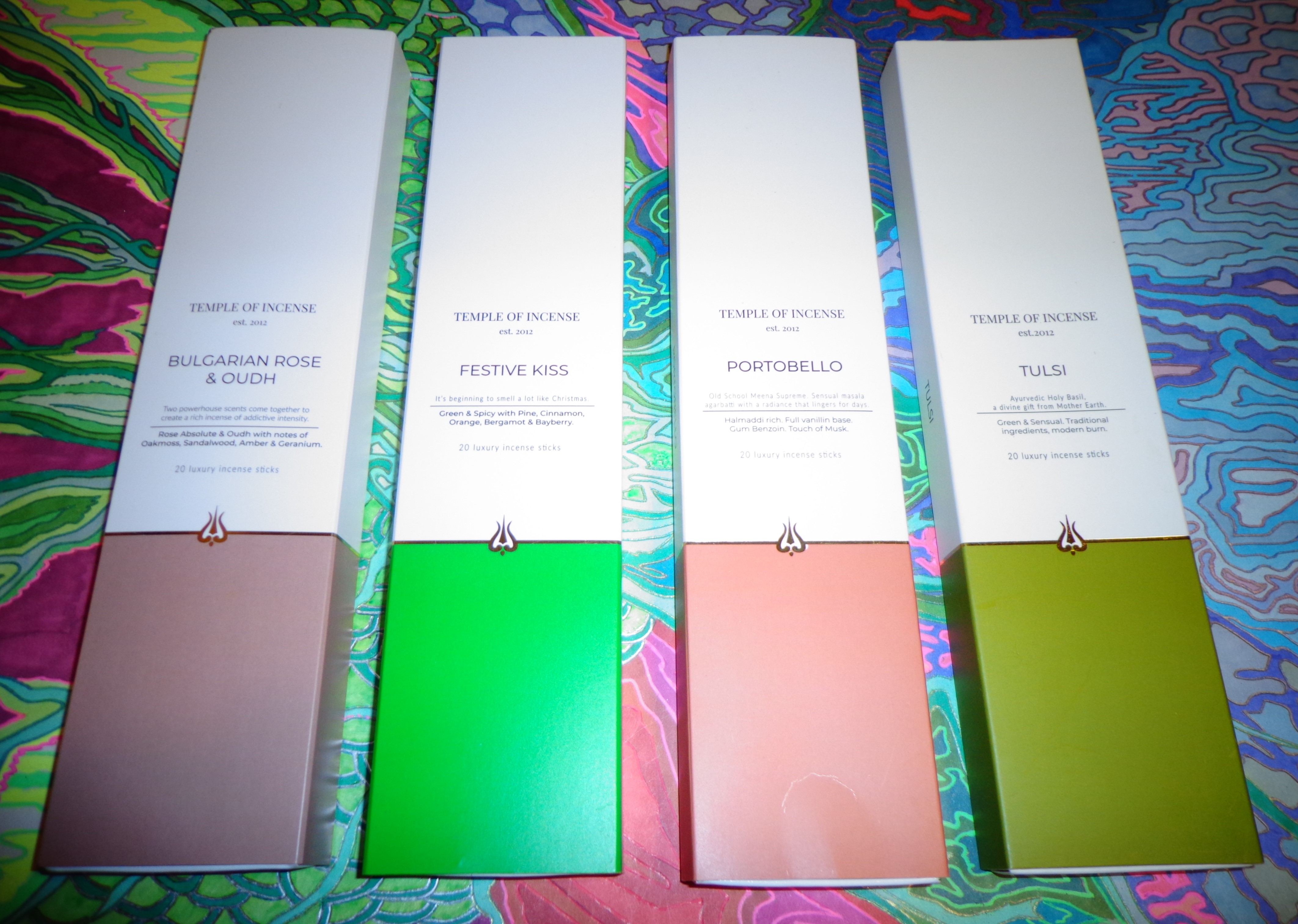 Please note that if you are new to ORS, we have done a wide-ranging number of reviews on the absolutely fabulous Temple of Incense line, all of which can be found by either clicking on the Temple of Incense link under Incense>India or checking out
Please note that if you are new to ORS, we have done a wide-ranging number of reviews on the absolutely fabulous Temple of Incense line, all of which can be found by either clicking on the Temple of Incense link under Incense>India or checking out 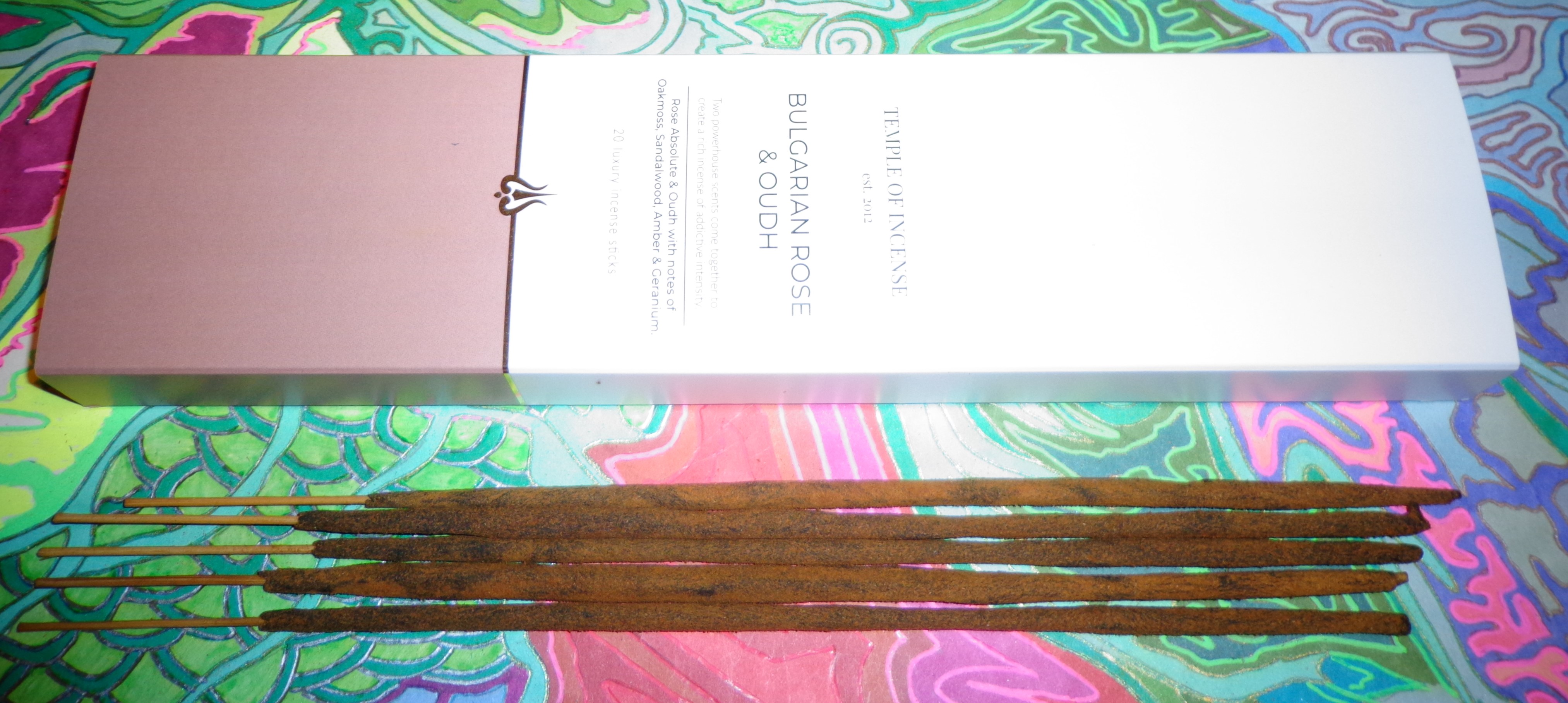 The Aydees announced their new
The Aydees announced their new 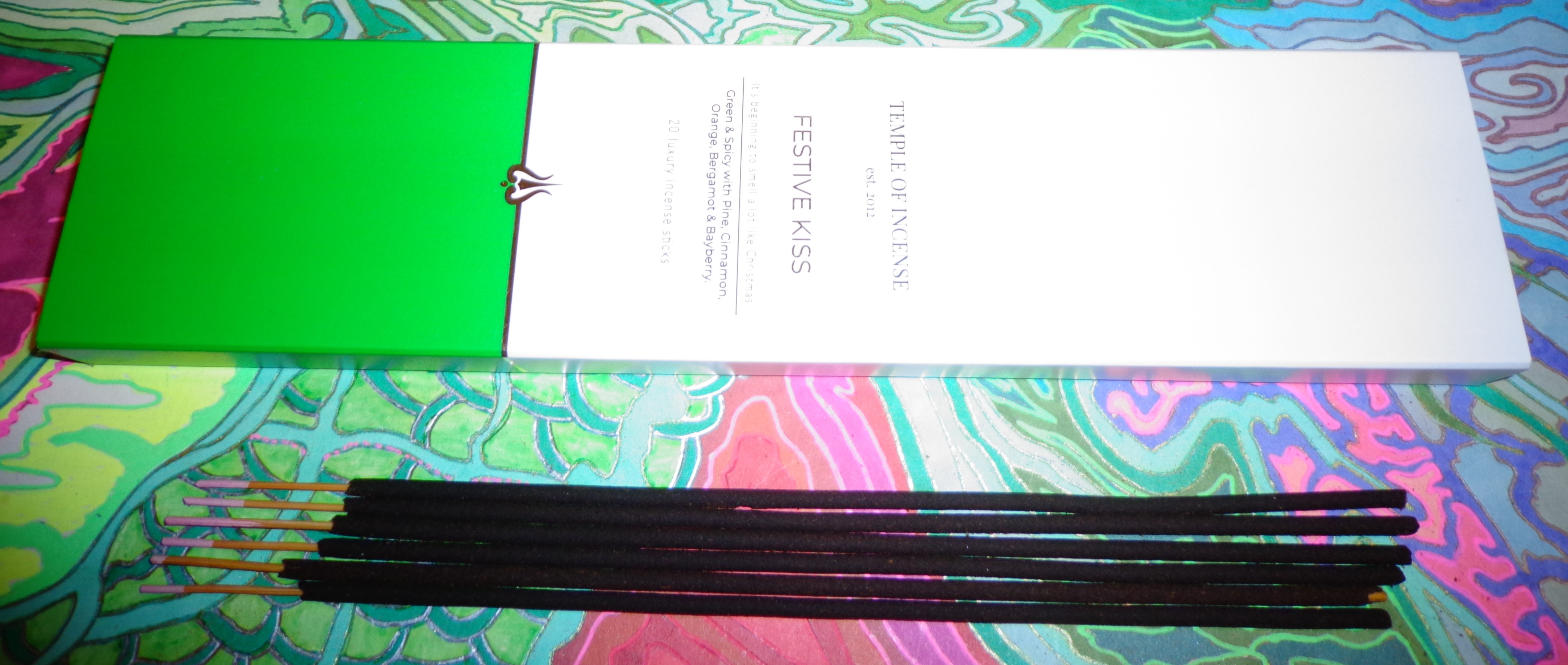
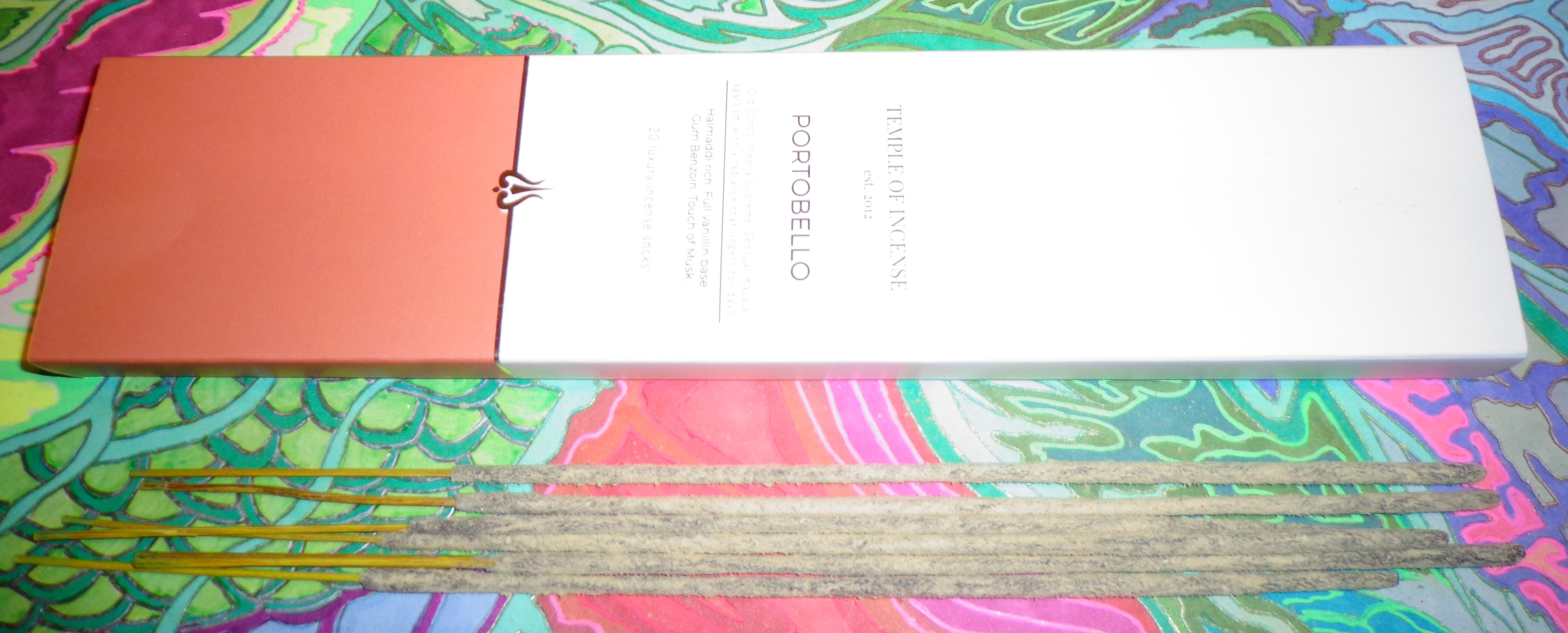
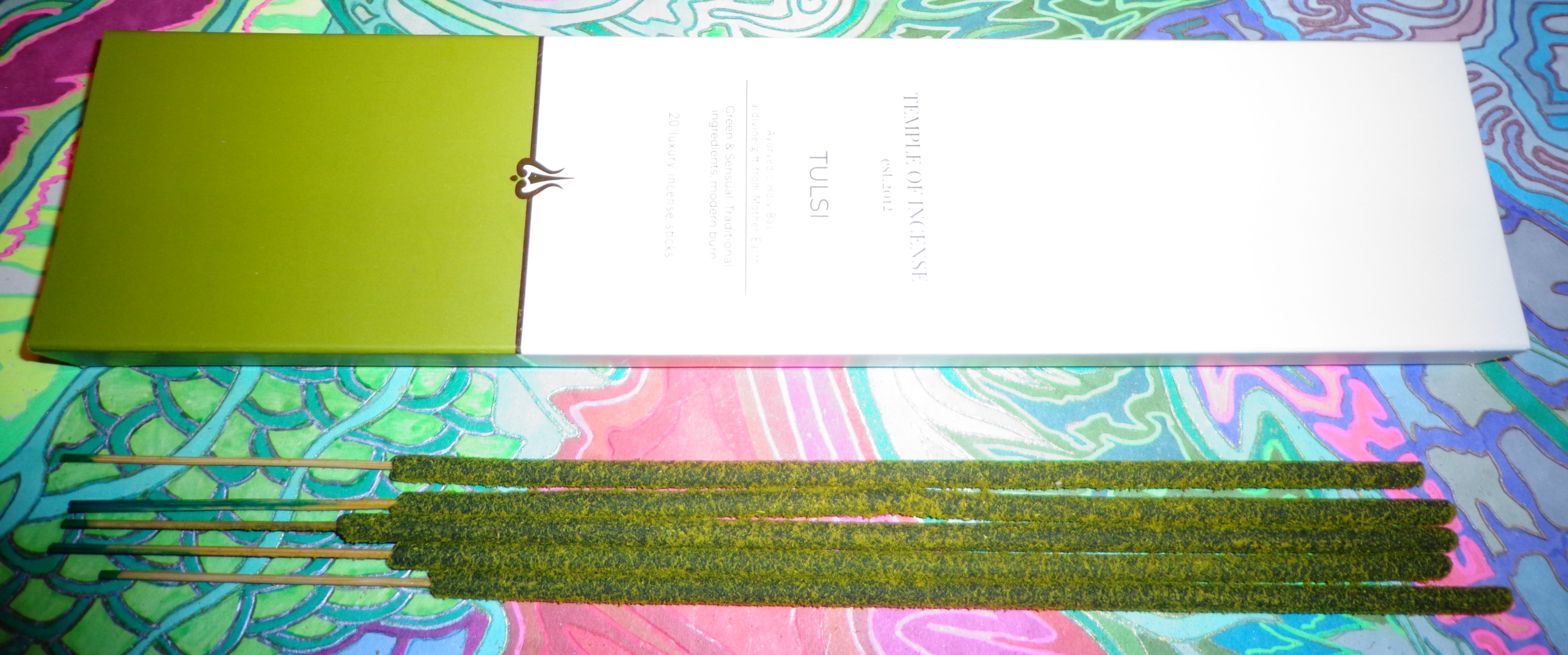 I nearly went to publication with the above three, but the arrival of a couple sticks of
I nearly went to publication with the above three, but the arrival of a couple sticks of  The provenance of a few of this second quintet of incenses from
The provenance of a few of this second quintet of incenses from 
 The
The  In a similar way much of the same can be said for
In a similar way much of the same can be said for  Since most of the incenses in this installment are a bit harder to determine if they are Madhavadas-sourced, my compass is basically to review those that I haven’t before and point to where I have. It’s difficult to tell if
Since most of the incenses in this installment are a bit harder to determine if they are Madhavadas-sourced, my compass is basically to review those that I haven’t before and point to where I have. It’s difficult to tell if  There are infinite variations of the rose/floral, pink colored sticks that show up in numerous catalogs and so I wouldn’t even make a guess to the provenance of
There are infinite variations of the rose/floral, pink colored sticks that show up in numerous catalogs and so I wouldn’t even make a guess to the provenance of 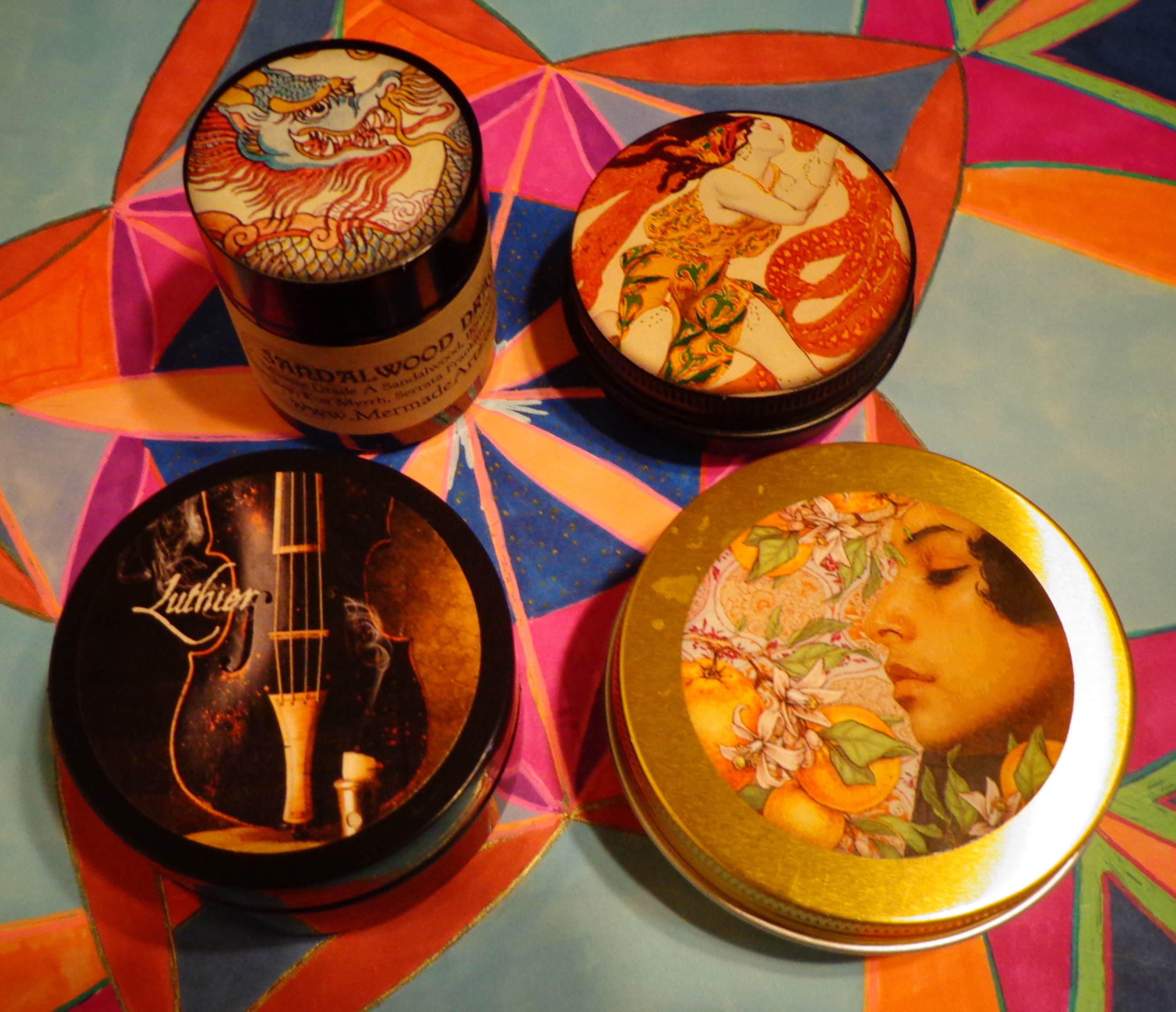
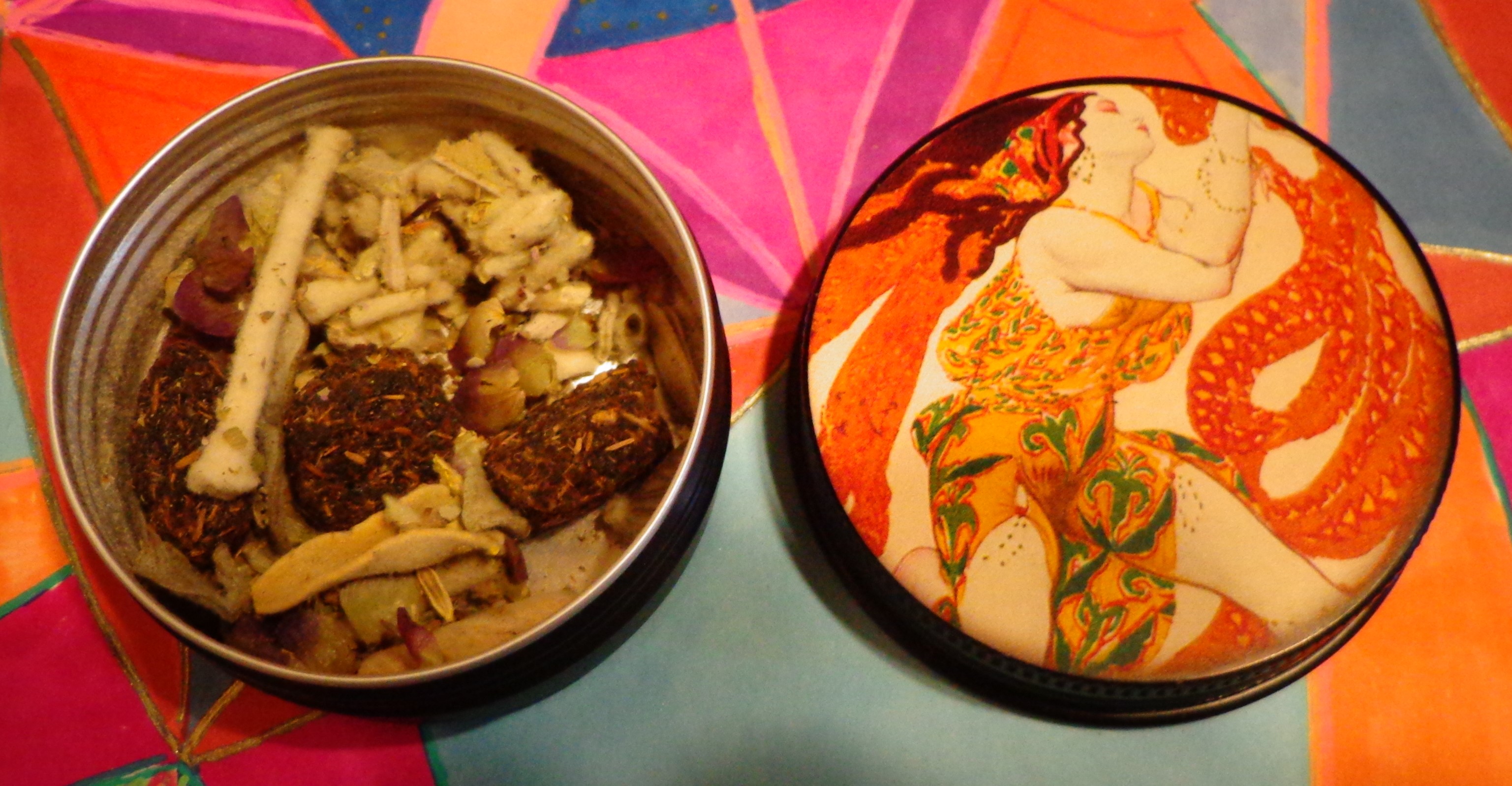 Before I took a look at the ingredients list of
Before I took a look at the ingredients list of 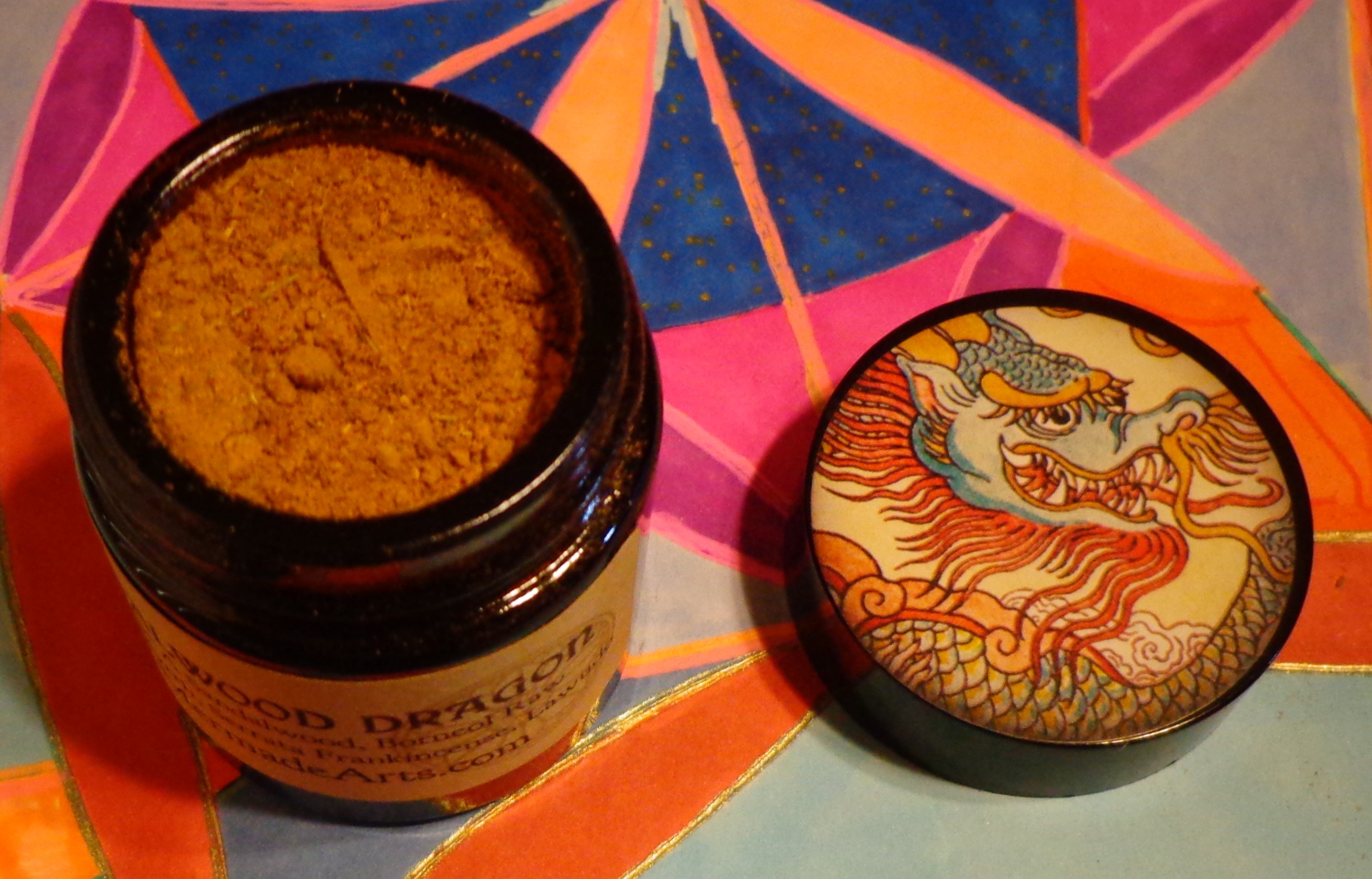 I reviewed a previous vintage of
I reviewed a previous vintage of 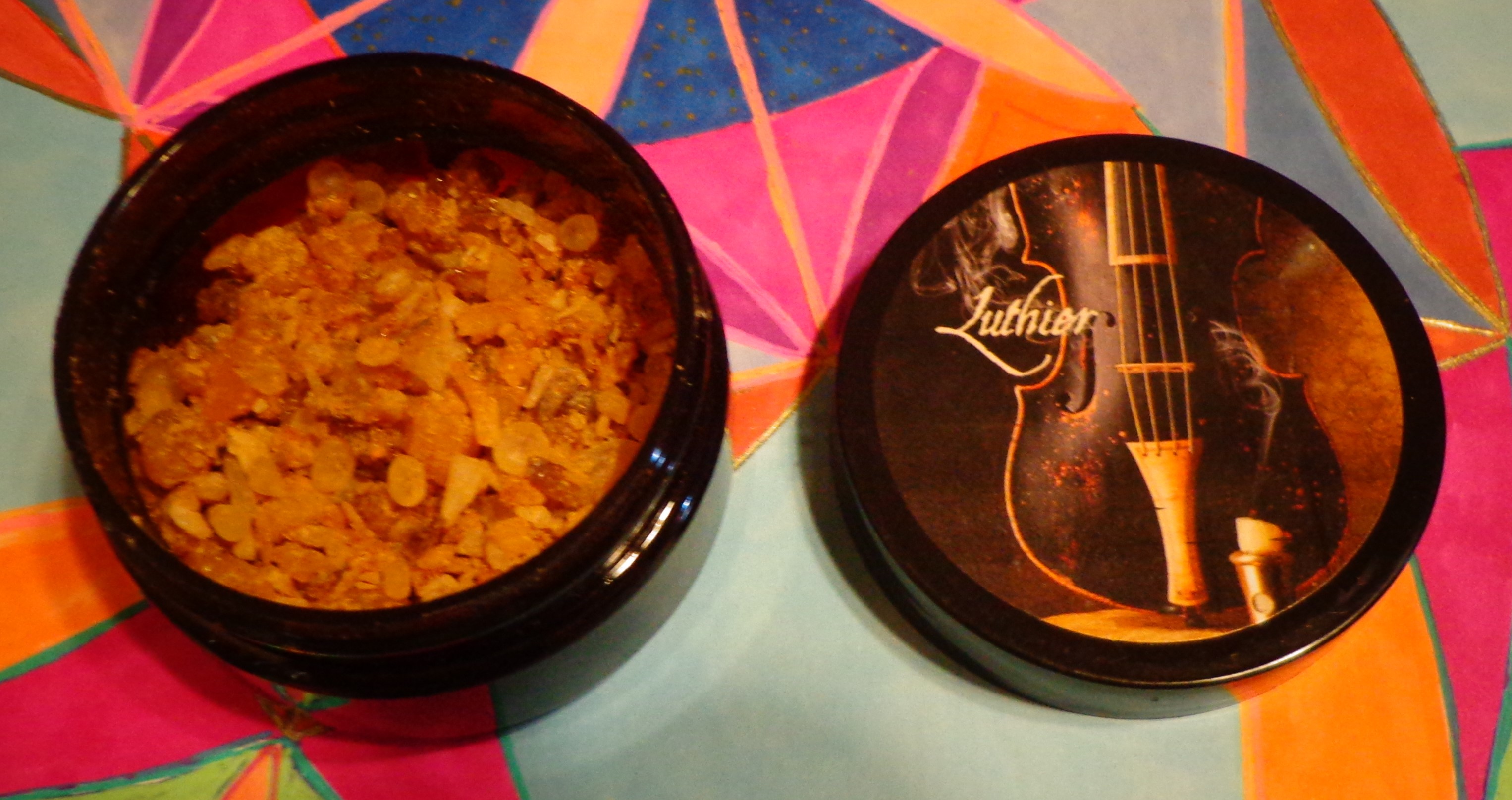 When I was young I used to bike to a record store that was next door to another store that sold stringed instruments. I wasn’t reminded of it until I first heated
When I was young I used to bike to a record store that was next door to another store that sold stringed instruments. I wasn’t reminded of it until I first heated 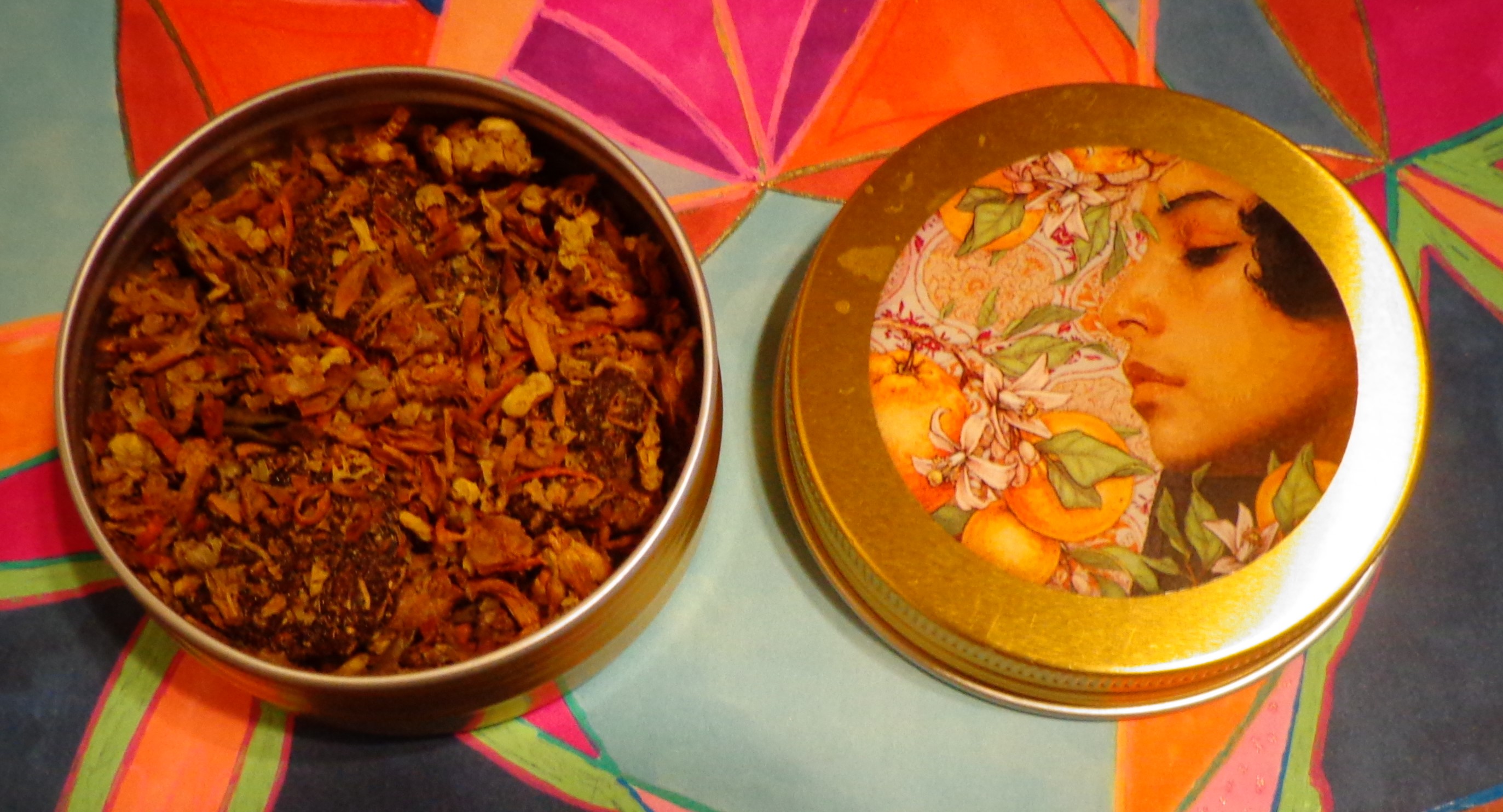 I would have probably liked
I would have probably liked 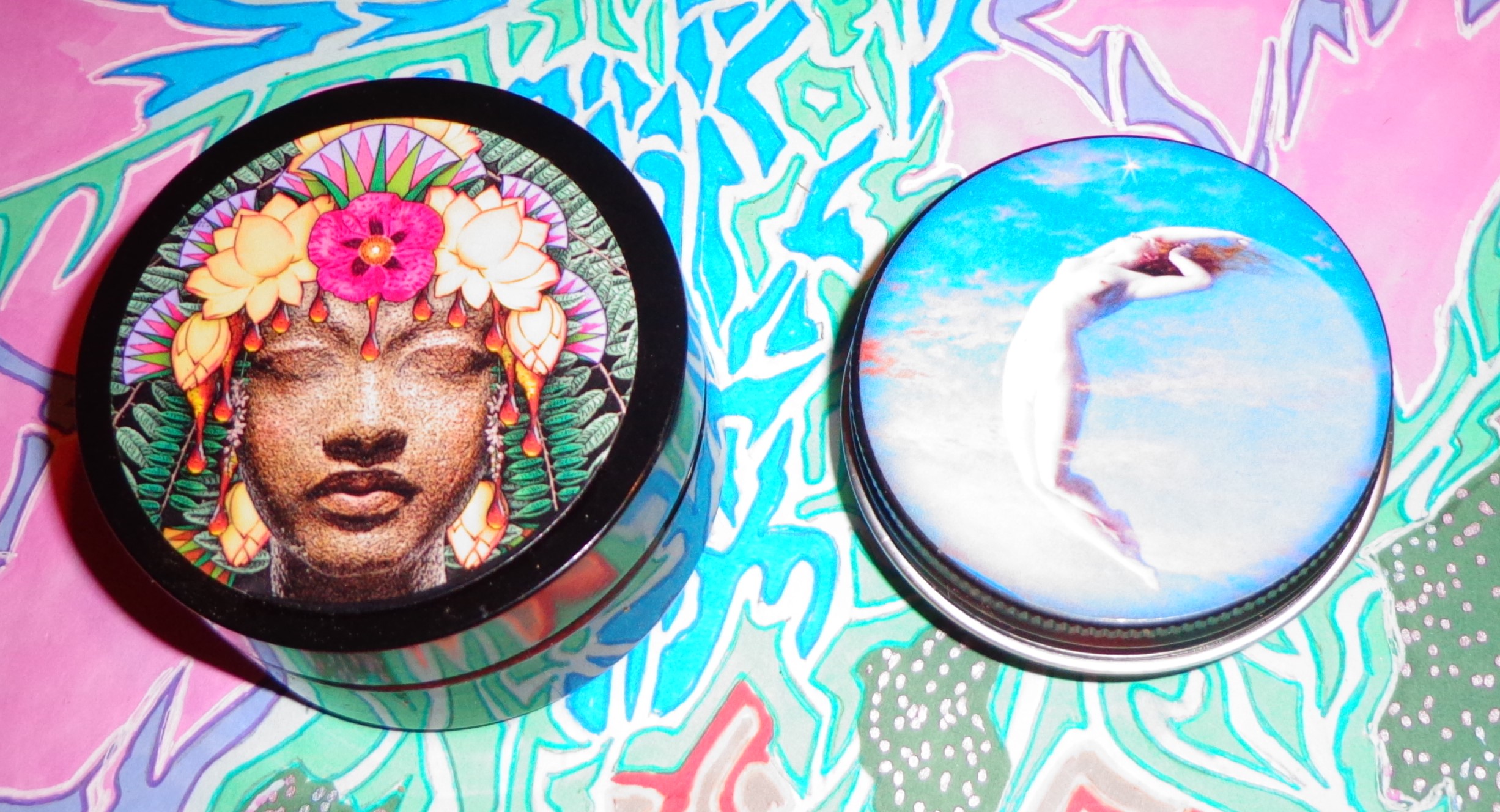 There’s a virtual history of Mermade kyphis being reviewed at ORS going back to 2011 (and a much longer tradition of Mermade making them) if you take a look at our
There’s a virtual history of Mermade kyphis being reviewed at ORS going back to 2011 (and a much longer tradition of Mermade making them) if you take a look at our 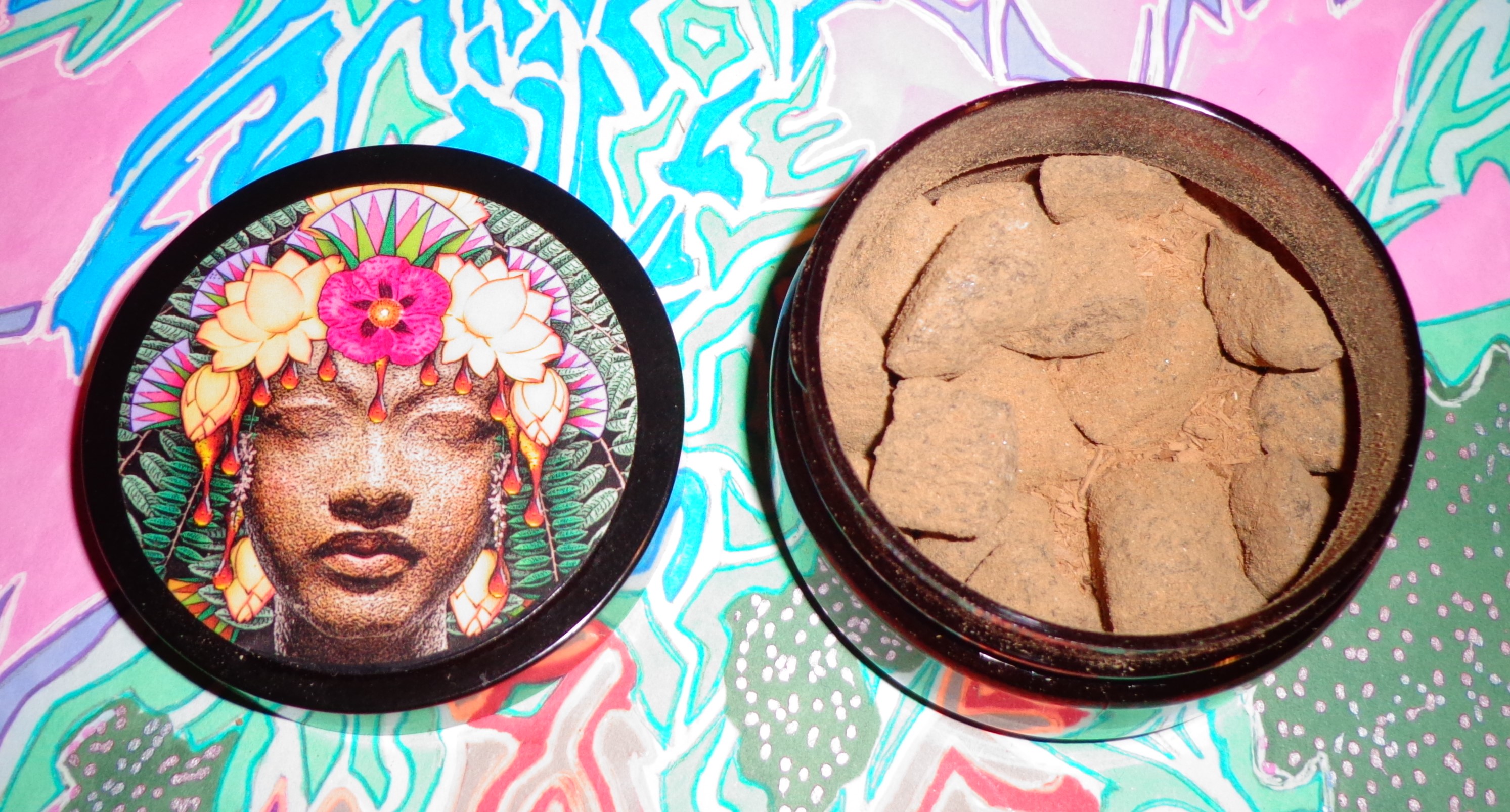 Reviewing a kyphi may not be as difficult as making one, but it’s a scent that is kind of hard to pin down. I’ve always used something like a fine wine or whiskey because the overall bouquet of a kyphi can be so rich and multi-faceted, usually with a distinct sense of age. It rarely feels like something you can just pick the elements out of, it’s more like the elements come together into something new. There are definitely similarities from one kyphi to another (usually for me it’s whatever the raisins and honey do, if they’re in there). However, I think this vintage,
Reviewing a kyphi may not be as difficult as making one, but it’s a scent that is kind of hard to pin down. I’ve always used something like a fine wine or whiskey because the overall bouquet of a kyphi can be so rich and multi-faceted, usually with a distinct sense of age. It rarely feels like something you can just pick the elements out of, it’s more like the elements come together into something new. There are definitely similarities from one kyphi to another (usually for me it’s whatever the raisins and honey do, if they’re in there). However, I think this vintage, 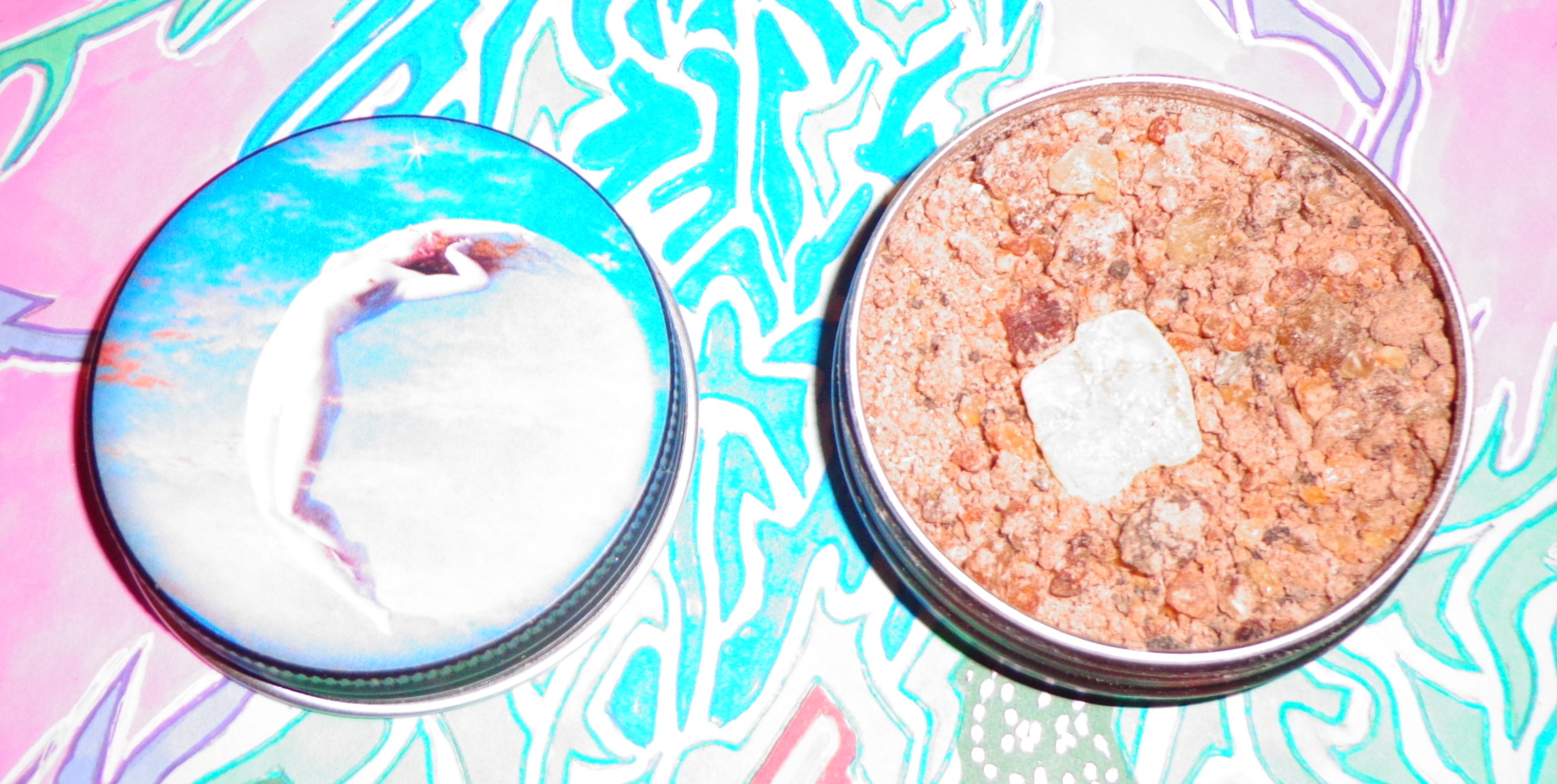 Katlyn has done a lot of what I would call lunar blends as well (Temple of the Moon, Mermade Moon, Moon Goddess, and Luna all come to mind). These have what I would call western magical correspondences about them, which means they tend to have some up front jasmine notes. Mermade has done a lot of fine work with jasmine and you may not be surprised that
Katlyn has done a lot of what I would call lunar blends as well (Temple of the Moon, Mermade Moon, Moon Goddess, and Luna all come to mind). These have what I would call western magical correspondences about them, which means they tend to have some up front jasmine notes. Mermade has done a lot of fine work with jasmine and you may not be surprised that 




You must be logged in to post a comment.